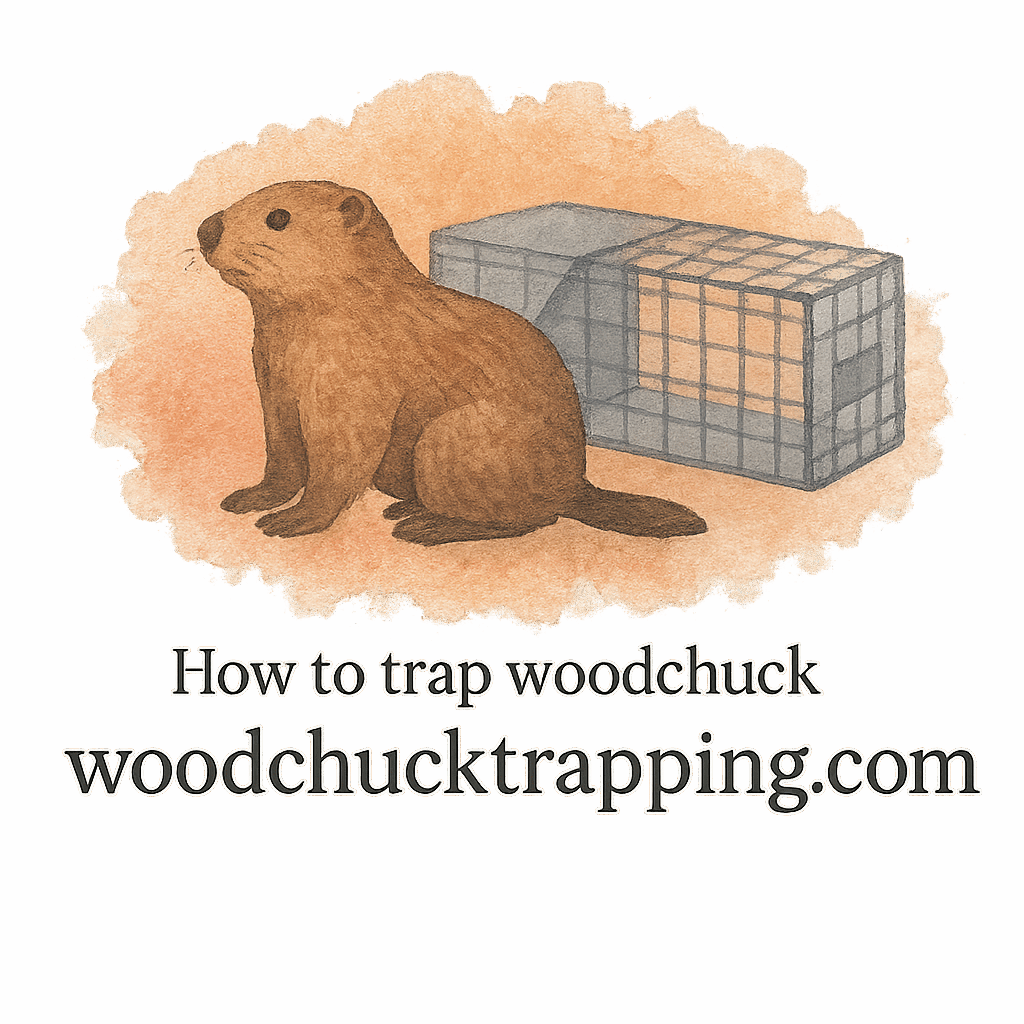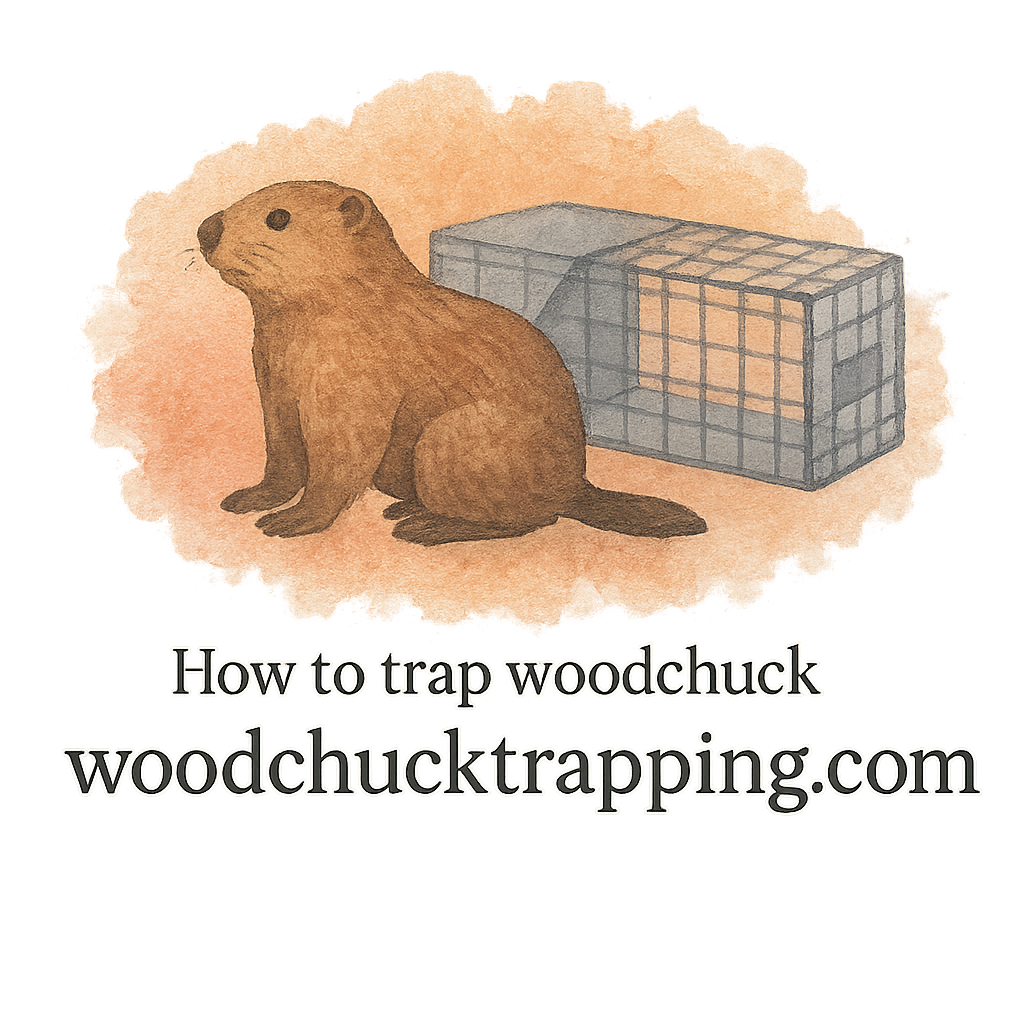Introduction
If you’ve noticed holes in your yard, chewed-up plants, or mysterious burrows under your shed, chances are you’re dealing with a woodchuck problem. These critters might look cute, but they can cause some serious damage. Luckily, you don’t need to break the bank to manage them. In this guide, we’ll explore 5 budget-friendly tools for humane woodchuck trapping techniques that are effective, affordable, and kind to the animals.
Understanding Humane Woodchuck Trapping
When it comes to trapping woodchucks, many people immediately think of harsh or lethal methods. But here’s the truth: you can get rid of them without being cruel.
Why Humane Methods Matter
Using humane techniques ensures that you’re respecting wildlife while protecting your property. Woodchucks, also known as groundhogs, are part of the ecosystem, and handling them with care matters. Humane trapping prevents unnecessary suffering and helps you relocate the animal safely.
Common Challenges in Woodchuck Control
Woodchucks are smart. They dig deep burrows, recognize human scent, and avoid poorly placed traps. Without the right tools, you’ll find yourself frustrated. That’s why choosing budget-friendly, effective gear is key.
Budget-Friendly Tools for Effective Trapping
Now let’s break down the five tools every homeowner should consider for humane woodchuck trapping.
1. Compact Live Traps
Live traps are the backbone of humane woodchuck control. Compact traps are affordable, easy to set up, and highly effective.
Best Uses of Compact Traps
These traps work well in small yards or minimal spaces. They don’t take up much room, and you can easily move them around burrow entrances.
Tips for Placement
- Set the trap near active burrows.
- Keep it stable so the animal doesn’t get spooked.
- Use natural coverings like leaves or soil to make it blend in.
For more placement ideas, check out proven trapping techniques.
2. Durable Trap Gloves
If you’re setting traps barehanded, stop right now. A solid pair of trap gloves is a must-have.
Safety Benefits of Gloves
Gloves keep your scent off the trap, which prevents woodchucks from getting suspicious. They also protect you from bites or scratches when handling a trapped animal.
How to Handle Traps Safely
- Always wear gloves when setting or carrying traps.
- Use both hands for balance when moving heavy equipment.
- Avoid direct contact with the animal for safety reasons.
For more safety tips, explore laws & safety guidelines.

3. Effective Scent Baits & Lures
The right scent bait can make or break your trapping efforts. Luckily, affordable options are available.
Types of Lures to Use
- Fresh vegetables like carrots or lettuce.
- Commercial woodchuck lures from trapping suppliers.
- Natural fruit baits to increase attraction.
Placement Strategies for Best Results
Place bait inside the trap and a small trail leading to it. This tactic uses the woodchuck’s natural curiosity to guide them in. Learn more baiting hacks at baiting & luring.
4. Humane Trap Covers & Shade Cloths
Once caught, woodchucks can panic. That’s where trap covers come in handy.
Reducing Stress for Trapped Animals
By covering the trap with a shade cloth or tarp, you reduce stress for the animal. This also keeps them safe from harsh sunlight or predators while in the trap.
Affordable Cover Options
You don’t need to spend big. An old blanket, towel, or tarp works just fine.
5. Essential Trap Gear & Handling Tools
Besides the big items, a few smaller tools make trapping safer and more effective.
Carrying Tools That Make Life Easier
A simple carrying handle or cart helps move traps without straining yourself.
Keeping It Budget-Friendly
You don’t need professional gear. Affordable trap gear options are available online, and some DIY fixes can work just as well.
Check out equipment reviews before buying.
Step-by-Step Humane Woodchuck Trapping Techniques
Signs of Infestation to Watch For
Before trapping, confirm you’re dealing with woodchucks. Look for signs like burrow entrances, chewed plants, and dirt mounds.
How to Set Up Traps Effectively
- Place traps directly at burrow entrances.
- Camouflage them with natural materials.
- Ensure traps are stable to avoid spooking.
Baiting & Luring for Maximum Success
Use strong-smelling lures and fresh vegetables. Always handle bait with gloves to avoid leaving human scent.
Safe Handling of a Trapped Animal
Cover the trap, stay calm, and transport the animal safely. For tips, see handling guidelines.
Preventing Future Woodchuck Damage
Yard Damage Prevention Tips
Once you’ve removed the animal, the work isn’t done. Seal off burrows, install fencing, and use deterrents to stop re-entry. More ideas here: prevention & damage control.
Long-Term Humane Control Methods
Relocate humanely, and consider planting less tasty vegetation to discourage woodchucks from returning.
Laws, Safety & Ethical Considerations
Checking Local Trapping Regulations
Every state has rules. Before trapping, read your local laws & safety regulations to stay compliant.
Safety Precautions Every Trapper Should Take
- Always wear gloves.
- Avoid handling the animal directly.
- Release it in a safe and legal location.
For more details, see trapping essentials.
Conclusion
Humane woodchuck trapping doesn’t have to be expensive. With just a few budget-friendly tools—compact traps, gloves, bait, covers, and basic gear—you can solve your problem while respecting wildlife. Remember, success comes down to the right techniques, a little patience, and ethical practices. Protect your yard and keep things humane—it’s a win-win.
FAQs
1. What is the most budget-friendly tool for woodchuck trapping?
A compact live trap is usually the most affordable and effective option.
2. Do I really need gloves when setting traps?
Yes, gloves prevent your scent from transferring to traps and keep you safe.
3. What’s the best bait for woodchucks?
Fresh vegetables combined with scent baits work wonders.
4. How can I tell if I have a woodchuck infestation?
Look for signs such as burrows, chewed plants, and yard damage.
5. Is it legal to trap and relocate woodchucks?
Check your local laws & safety before relocating any animal.
6. What should I do after trapping a woodchuck?
Cover the trap, stay calm, and follow humane handling practices.
7. How do I prevent future infestations?
Seal burrows, use fencing, and follow prevention strategies.


